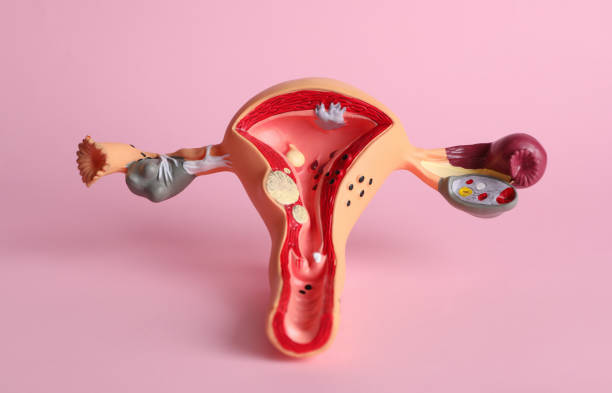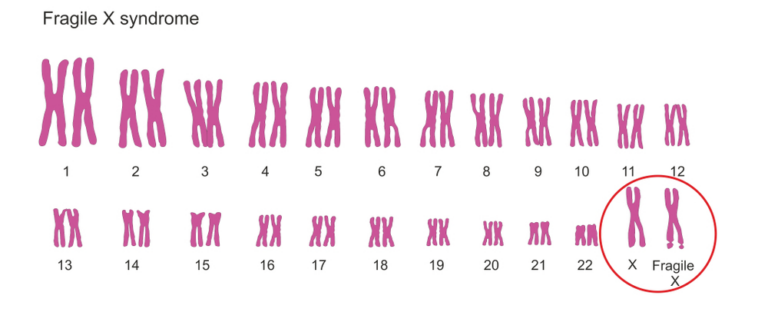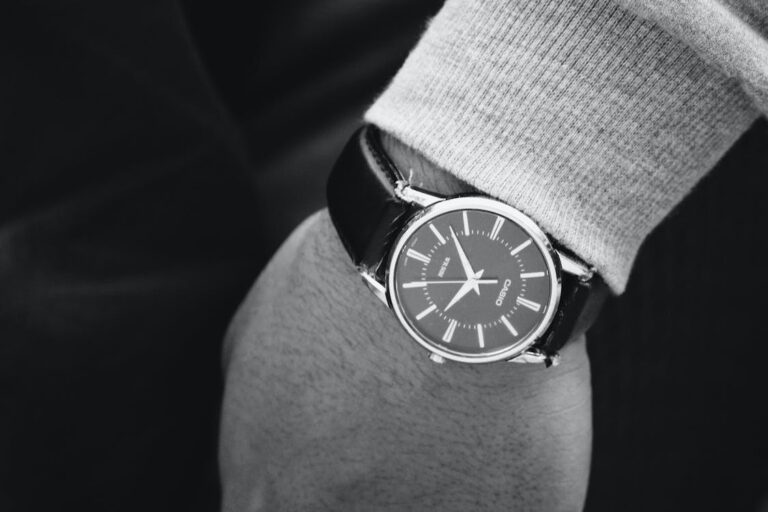Ovarian Rejuvenation
As an individual gets older, their body undergoes various changes that will result in a reduced ability to reproduce. This will also impact the quality of their gametes (eggs and sperm). This will ultimately lead to a condition that is referred to as infertility. Due to this, some techniques like ovarian rejuvenation using PRP, which is aimed at improving fertility exist.
Infertility is described as a situation where there is an inability of a person to conceive after a year of unprotected sexual intercourse with their partner. Ageing has been estimated to be the most common cause of infertility. Research has shown that the mean age at which women conceive their first child has risen from 23-30 years in the past half-century. This suggests that more women are delaying childbirth. Therefore, this means that more women are planning to conceive with fewer oocytes and depleted ovarian reserves. This is the reason that the concept of ovarian rejuvenation has come into existence and is gaining more importance in fertility practice.
What is ovarian rejuvenation with PRP for treating infertility?
Ovarian rejuvenation is a procedure where platelet-rich plasma (PRP) is used to stimulate the ovaries to improve fertility. PRP is a concentrated solution of growth factors and cytokines that are extracted from the blood of the patient. When this solution is injected into the ovaries, it may help stimulate the growth of follicles, improve egg quality and quantity and boost the chances of the patient to get pregnant naturally or through IVF.
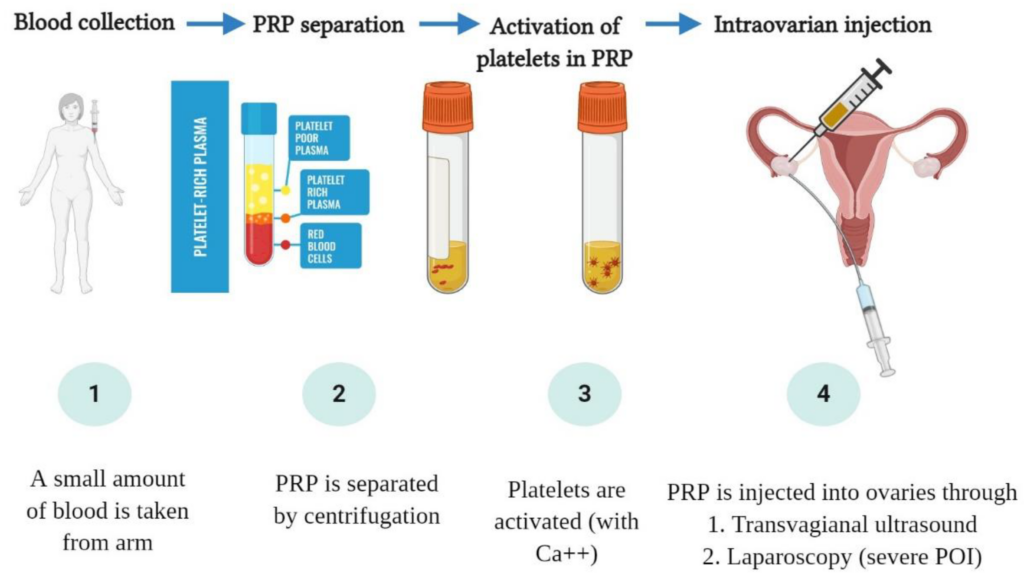
PRP contains growth factors that can help repair the damaged tissue in the ovaries. Then this can stimulate the production of new eggs. This is a relatively new procedure but has shown promising signs in the early studies. The procedure does not cure infertility, but it can be helpful for women who are struggling to conceive due to very low AMH and poor ovarian reserve. The procedure is also generally safe and well-tolerated and can be performed as an outpatient procedure.
Who are the candidates for this therapy?
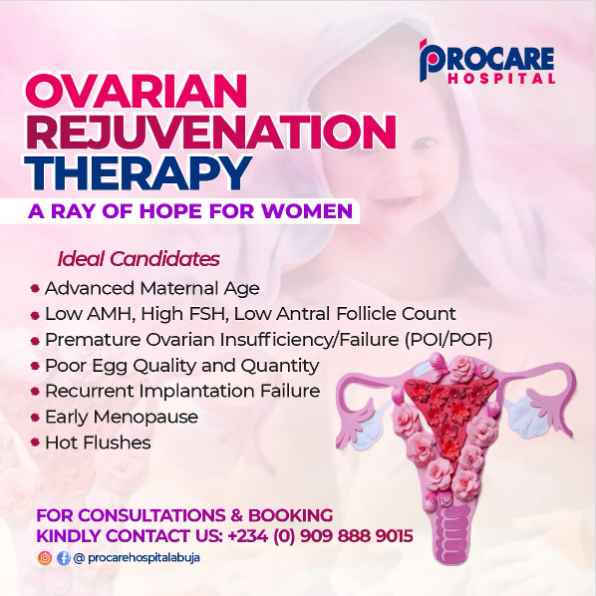
Ovarian rejuvenation using PRP is typically recommended for women who are experiencing any of the following:
- Low or diminished ovarian reserve – Women who have this condition typically have lower than normal levels of AMH and eggs. Low ovarian reserve makes it very difficult for the individual to successfully conceive either naturally or through assisted reproductive technologies like IVF.
- Poor response to IVF or poor ovarian response – This means that the woman does not produce as many eggs as is expected during an IVF cycle. Poor response to IVF can also be an indication that there is poor egg quality or low ovarian reserve.
- Early menopause, primary ovarian insufficiency and very low AMH – This is for young women who are diagnosed with low AMH and poor ovarian reserve. Undergoing ovarian rejuvenation with PRP may make them stand a chance of conceiving.
Therefore, using ovarian rejuvenation has the potential to help the individual use her eggs and opt for self-oocytes during IVF instead of using donor eggs.
Does carrying out IVF with ovarian rejuvenation increase the success rate?
There have been many reports recently of improved IVF outcomes following ovarian rejuvenation, but the scientific evidence supporting its efficacy is limited. Most of the studies done have either been small-scale or retrospective, making it hard to arrive at definitive conclusions. It is important to carry out more research to determine the true effectiveness of the technique in increasing the success of IVF.
What are the benefits of undergoing ovarian rejuvenation with PRP?
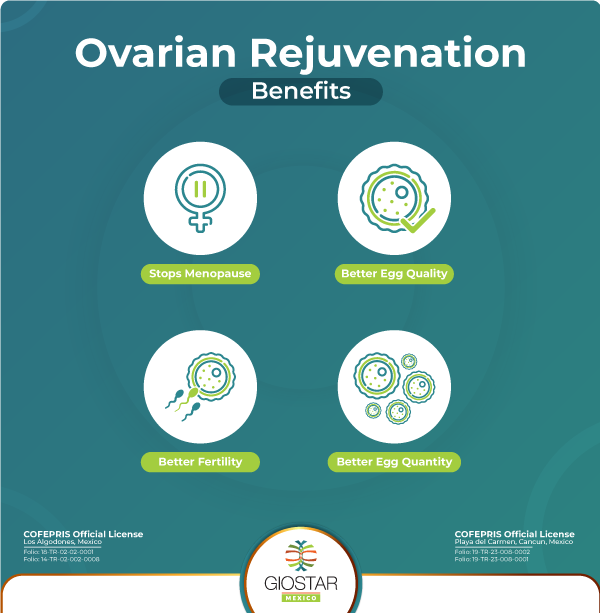
Numerous studies indicate that the injection of PRP will lead to the following changes:
- Higher AMH values – Increase in the chances of improving AMH values, which indicates improved ovarian reserve
- Higher antral follicles – Increased chances of retrieving more number of mature oocytes after ovarian stimulation during an IVF cycle
- Spontaneous resumption of menstrual cycles – especially in women who have premature menopause
- Improvement in ICSI/IVF cycle outcome – This is seen in poor responders with increased number and quality of oocytes leading to better embryos
- Improved hormone profiles – This is seen especially in the E2 and FSH levels.
- Higher numbers of retrieved oocytes – especially in IVF cycles result in higher and better quality embryos.
It must be noted that the exact nature and level of impact will not be known yet, but in the future when more randomized control trials are conducted. These are still very early days of the therapy, and a lot of data are still being collected based on the trials currently being undertaken.
How is the ovarian rejuvenation with PRP performed?
The patient is prepared on the day of the therapy. This may involve drawing a small amount of the patient’s blood usually from the arm. The sample is then processed with a centrifuge to separate the PRP from other blood components. Local anaesthesia or mild sedation will be applied in the area where the PRP will be injected, this will help in minimizing the discomfort during the procedure. Then using ultrasound to ensure accurate placement, the specialist will inject the concentrated PRP directly into the ovaries. The number and the location of the injections may vary depending on the individual’s condition and the specialist’s decision.
After the PRP injections, the patient is usually monitored for a short period to ensure that there are no immediate complications or adverse effects. The patient will also be given instructions on post-procedure care which may include taking some medications and avoiding stress for some time. There will be follow-up appointments where the doctor will help monitor the patient’s response to the treatment, assess the changes in the ovarian response and evaluate the need for further cycles of ovarian rejuvenation. The procedure is outpatient and is usually completed within 3-4 hours.
How can the effectiveness of ovarian rejuvenation therapy be determined?
The two tests that are done commonly to assess ovarian reserve are AMH and transvaginal sonography for antral follicle count. After 4-6 weeks, if the ovarian rejuvenation has been effective, there will be an increase in AFC and AMH values, indicating an improvement in the ovarian reserve.
The information provided in this blog is for educational purposes only and should not be considered as medical advice. It is not intended to replace professional medical consultation, diagnosis, or treatment. Always consult with a qualified healthcare provider before making any decisions regarding your health. Read more

